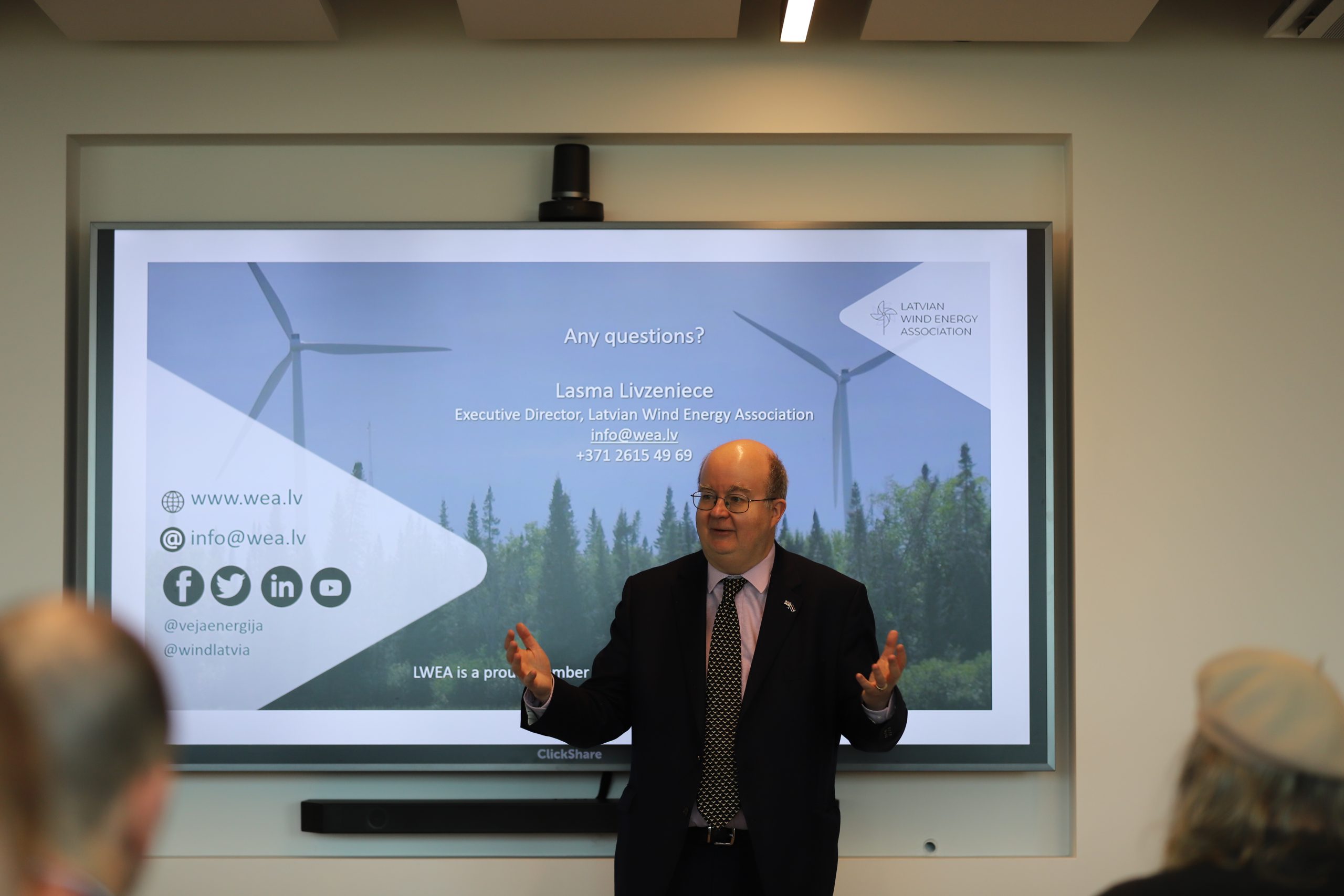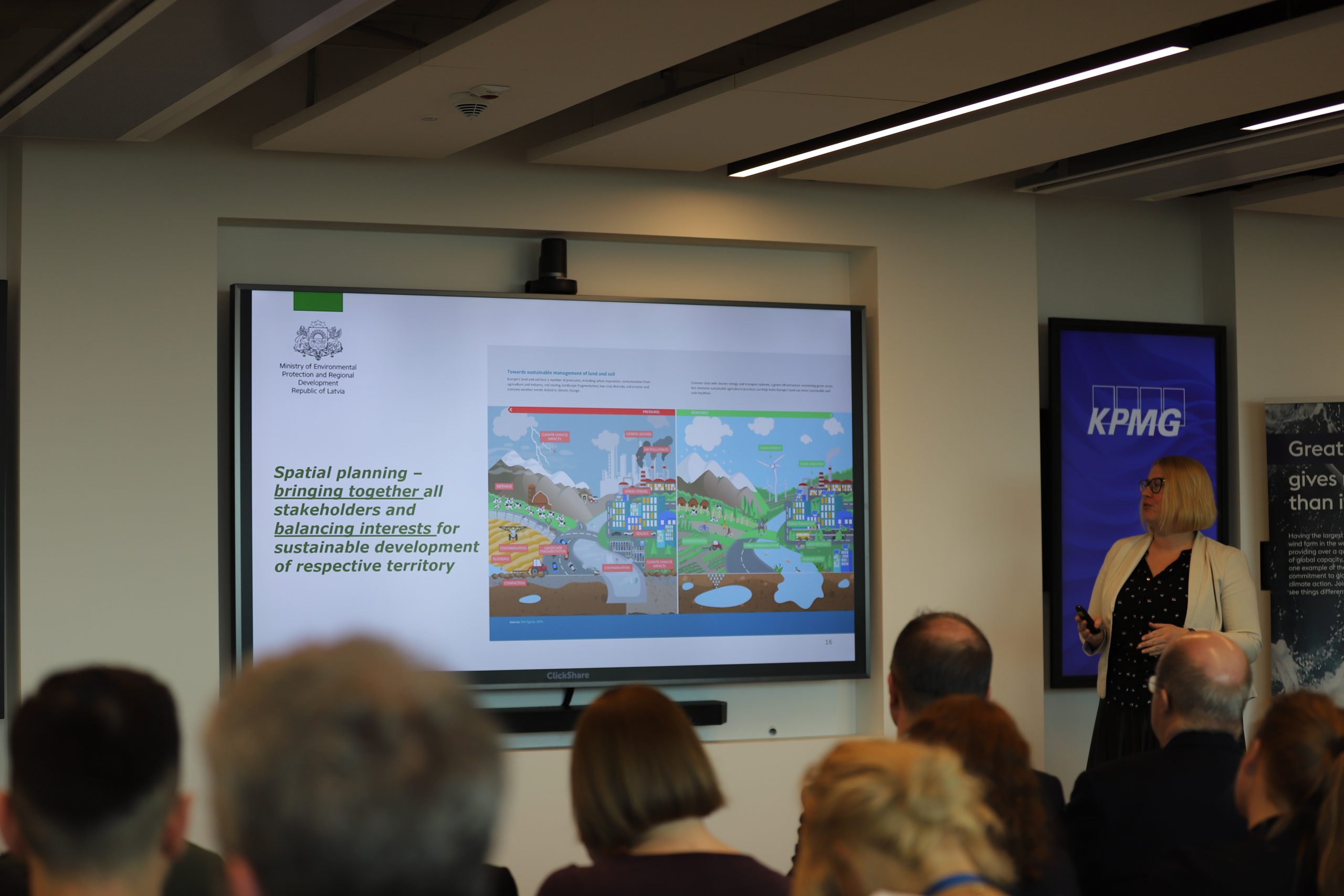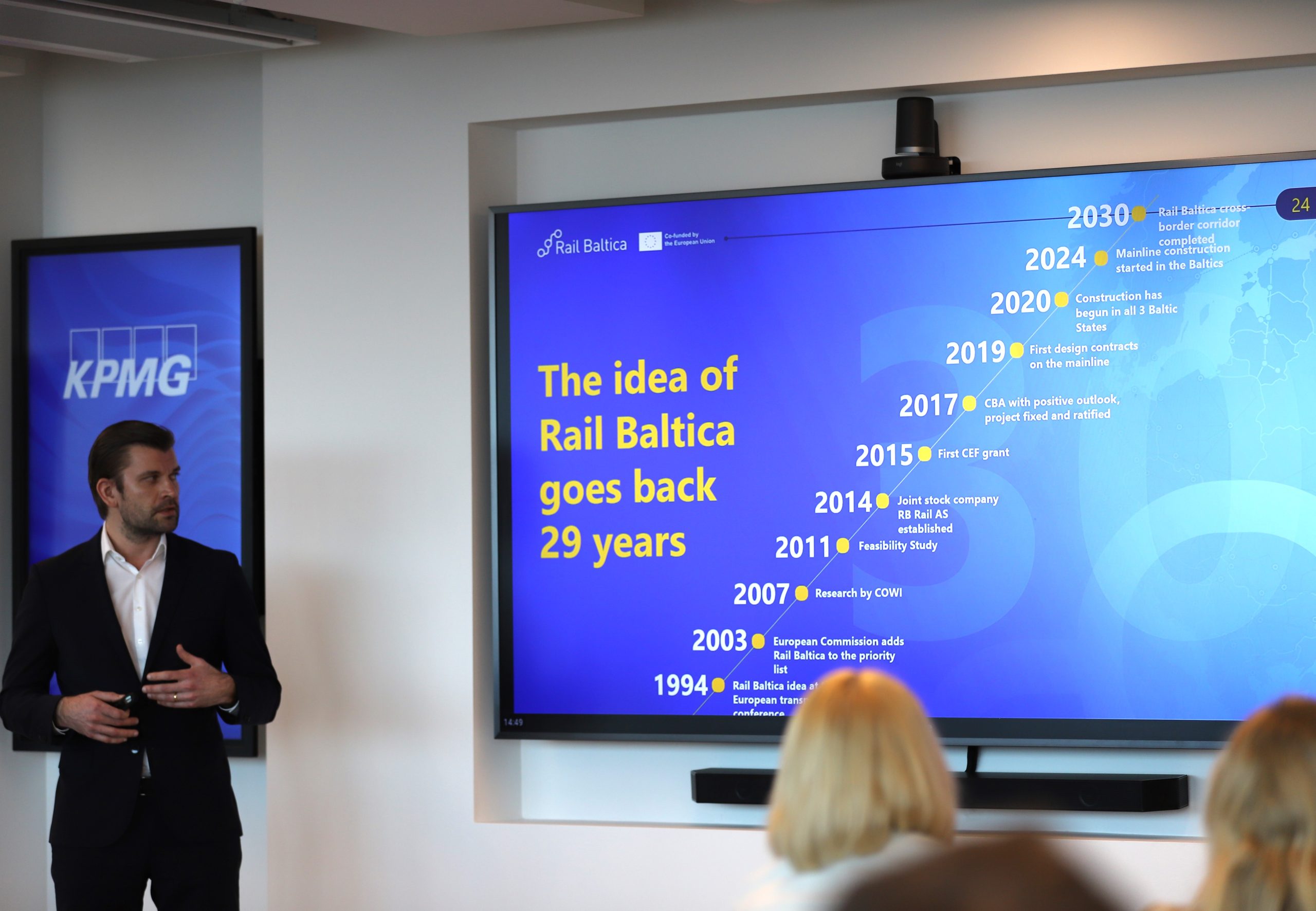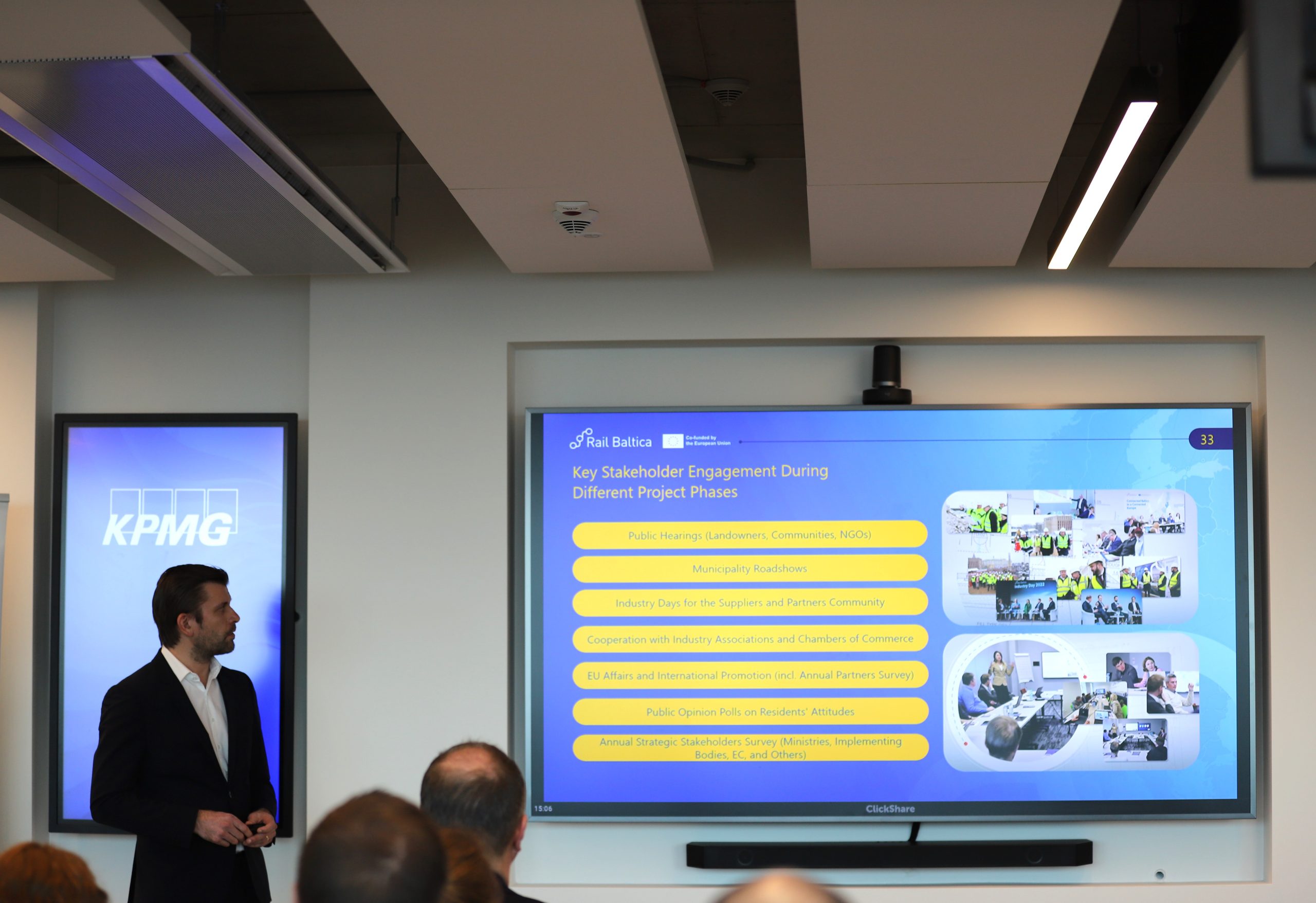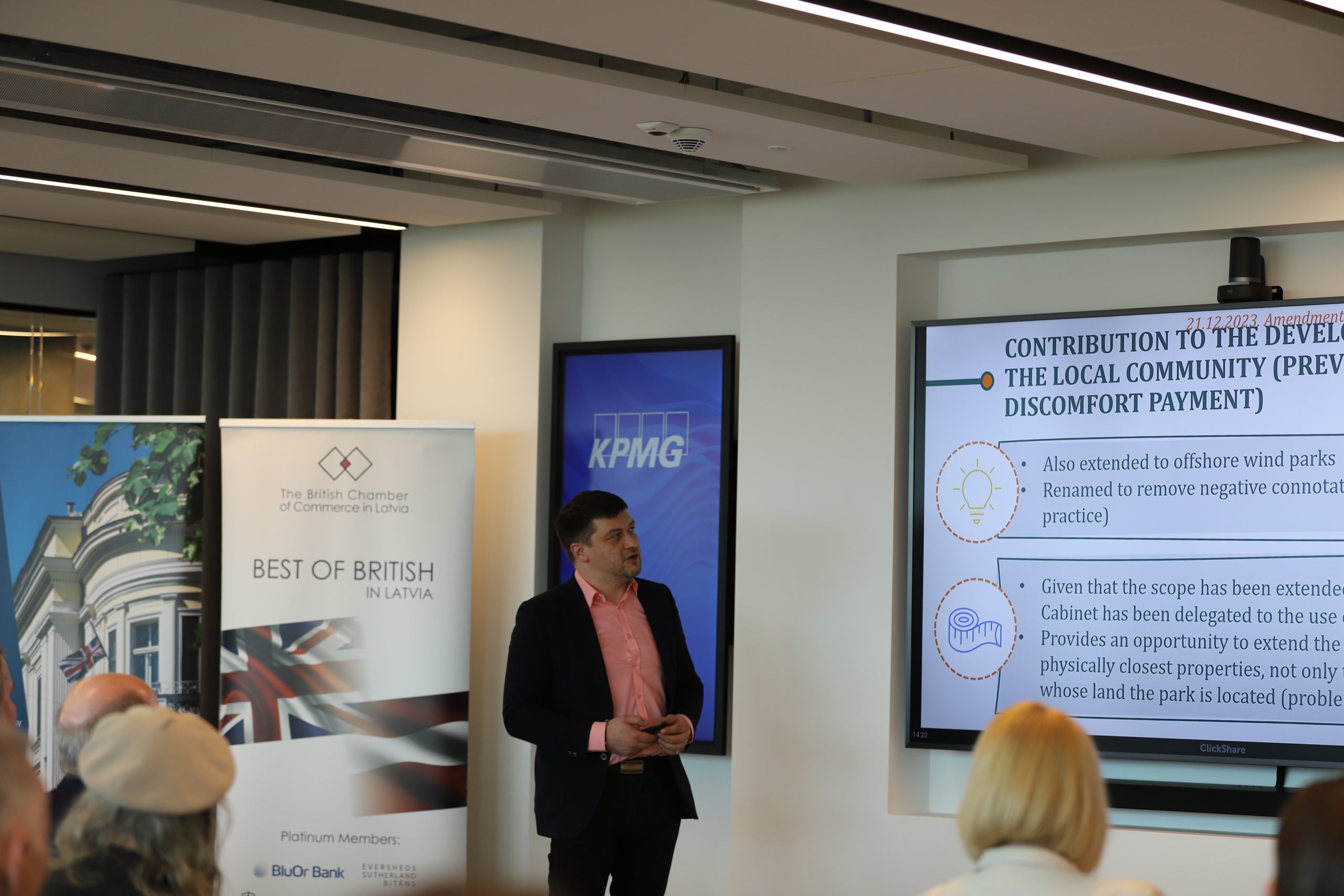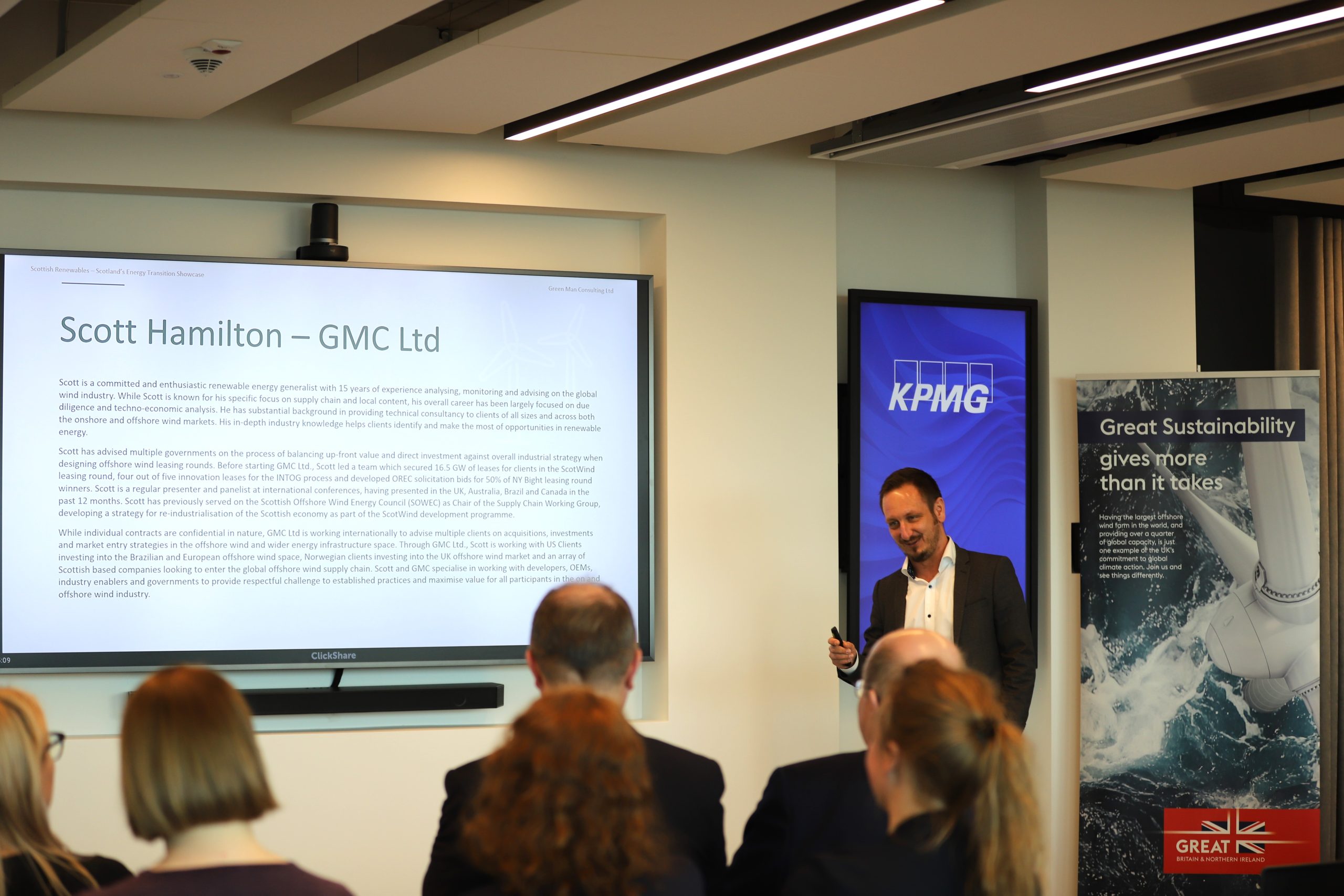In the realm of infrastructure development, the term “NIMBYism” (Not In My BackYard) looms large, encapsulating the complex interplay between the necessity of large-scale projects and local resistance to their implementation in proximity to residential areas, natural landscapes, or other cherished spaces. In a recent discussion organized by the British Embassy in Riga, in cooperation with the British Chamber of Commerce in Latvia (BritCham) and KPMG Latvia, experts from the Wind Energy Association, the Ministry of Climate and Energy and the Ministry of Environmental Protection and Regional Development, GMC Ltd and Rail Baltica, the largest infrastructure project in the Baltic countries with a transformative impact on the region, shared their proactive engagement and cooperation activities to keep the public and strategic stakeholders informed and involved in their projects’ development.
Kristīne Zvirbule, Executive Director of BritCham Latvia, underscored the significance of drawing upon British best practices to cultivate productive dialogue among Latvian entrepreneurs, policymakers, and communities.
Ēriks Diļevs, Head of Branch in Latvia, representing the Rail Baltica central coordinator RB Rail AS, shared insights during a presentation focusing on the challenges and lessons learned throughout Rail Baltica’s journey from conception to the beginning of construction. Additionally, he participated in an expert panel discussion, highlighting the project’s progression and stressing the importance of stakeholder engagement. “Our engagement with diverse stakeholders is not merely a necessity; it is fundamental to the success and sustainability of Rail Baltica. By fostering collaboration and understanding, we can realize a shared vision of connectivity and prosperity for the Baltic region,” summarized Diļevs.
Rail Baltica’s approach to community involvement spans various phases of the project, exemplifying a comprehensive strategy to address diverse stakeholders’ concerns and interests. This includes providing platforms for landowners, communities, and NGOs to voice their opinions and concerns through public hearings. Additionally, engaging with local governments via municipality roadshows ensures alignment and addresses municipal-level considerations. Furthermore, dialogue with suppliers and partners during industry days fosters collaboration and addresses industry-specific challenges. Rail Baltica also cooperates with industry associations and chambers of commerce to promote understanding and collaboration, while leveraging international partnerships and engaging with policymakers to garner support and foster alignment with broader European objectives. Regular surveys are conducted to gauge residents’ attitudes, and feedback from key stakeholders, including ministries and Rail Baltica delivery organizations, is solicited to inform project direction and decision-making.
Take a look at the video series regarding environment Zoom in on Environment and design Zoom in on Design to grasp the Rail Baltica planning process, including stakeholder engagement.
Through these multifaceted engagement efforts, Rail Baltica aims to build trust, transparency, and consensus around the project’s objectives and benefits. Notably, a recent pan-Baltic public opinion survey has underscored a consistent level of support for Rail Baltica, with an average approval rate of 6 out of 10 among the three Baltic countries. This continued public support shows that the project is seen as valuable for improving transportation connections, boosting economic growth, and fostering better relations among Baltic countries.

